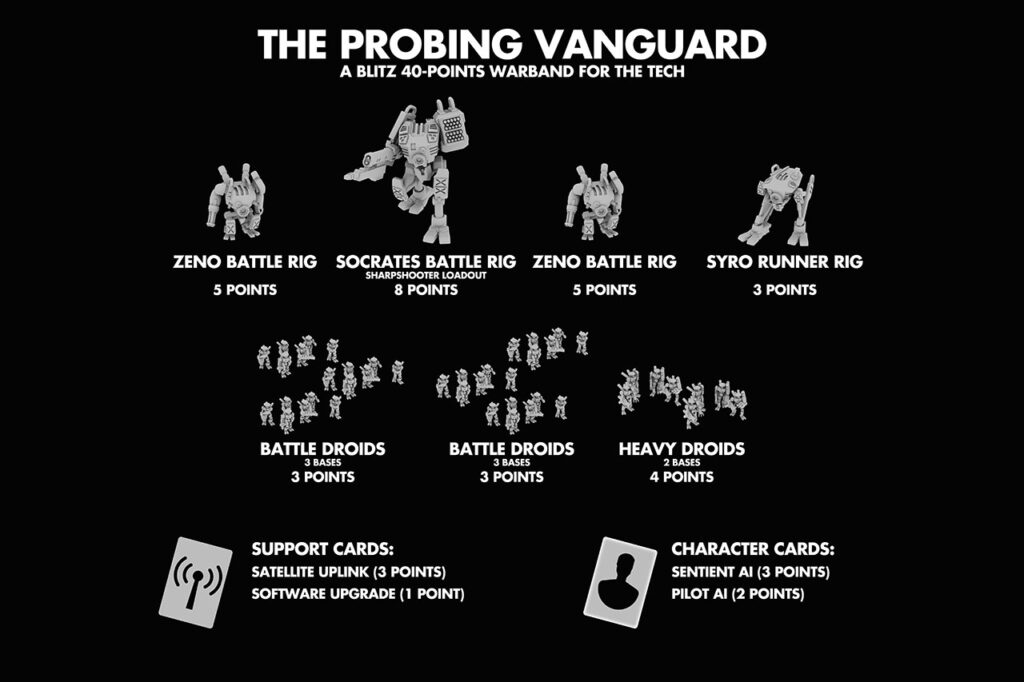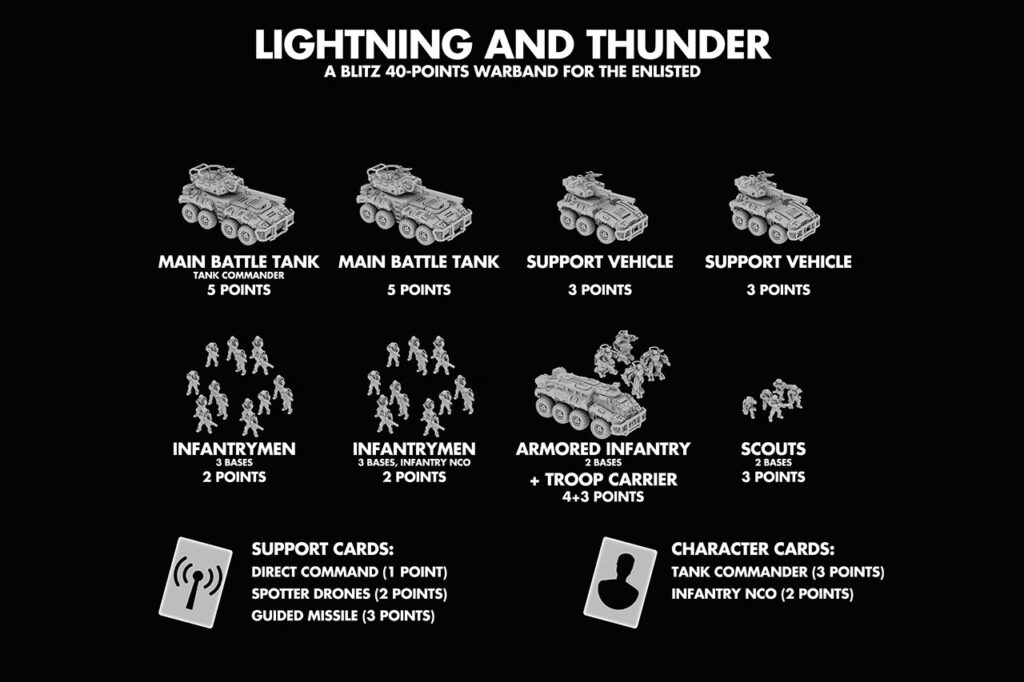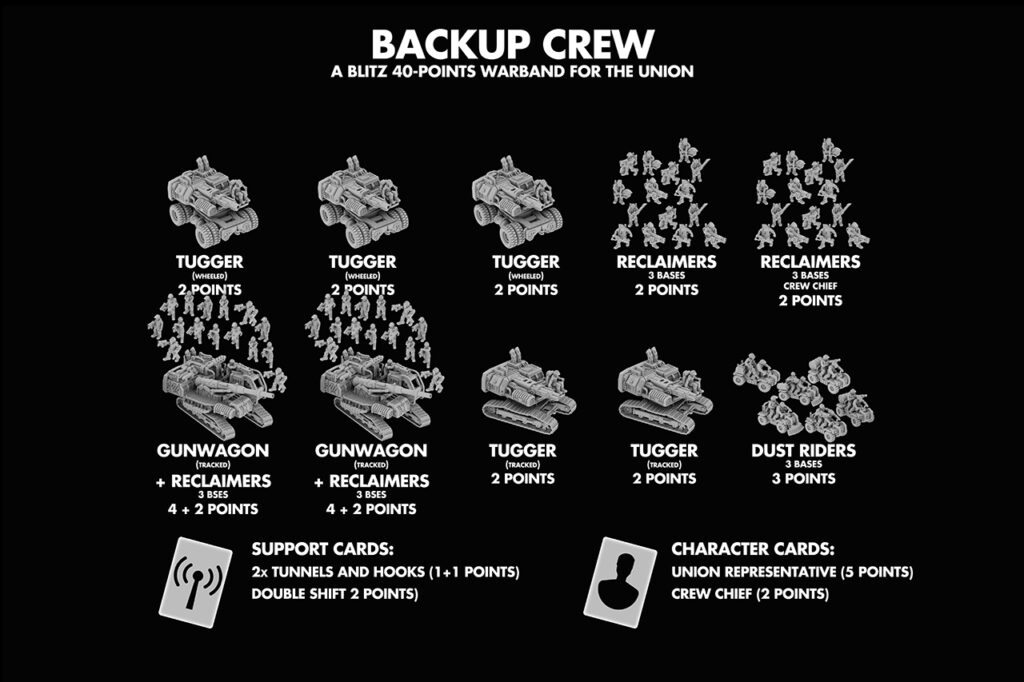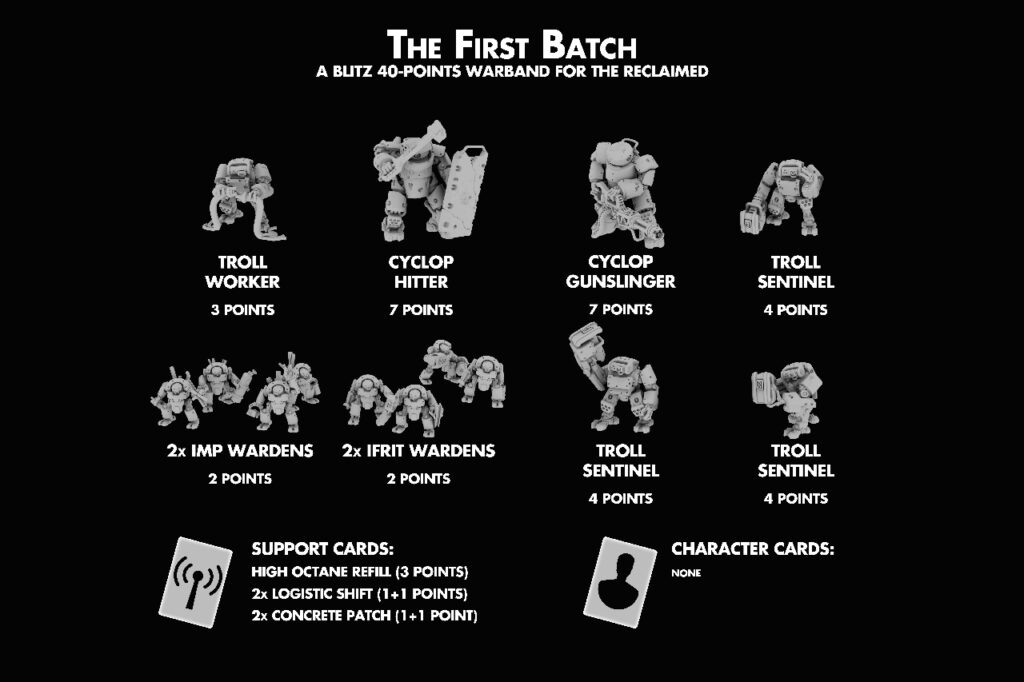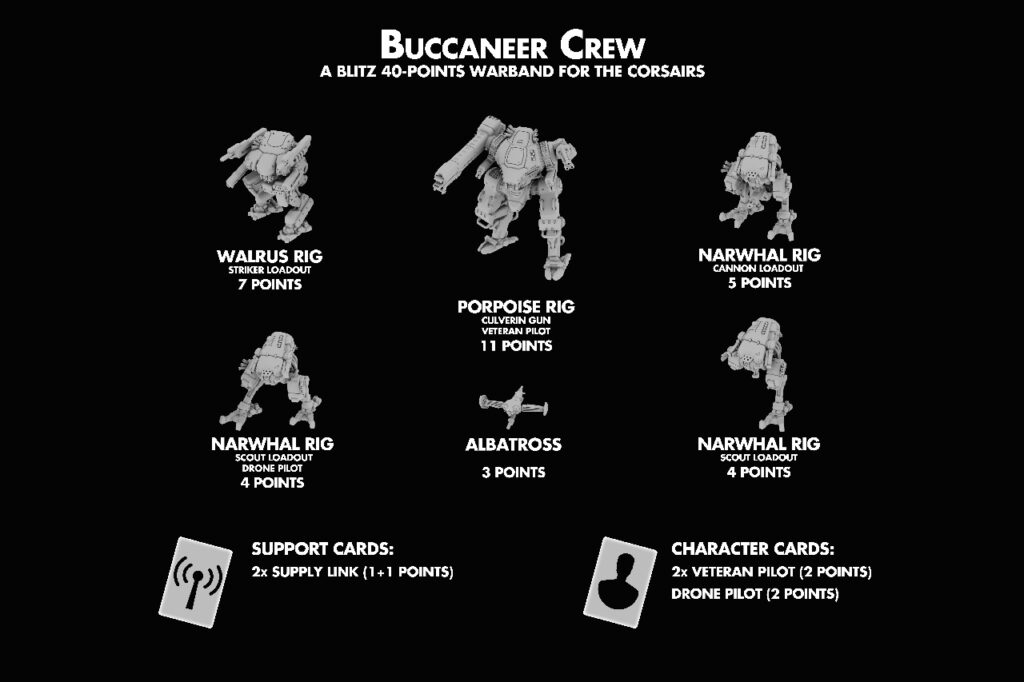So, you want to try Full Spectrum Dominance out . You’ve come to the right place! In this page I’ll guide you through all you need to get started and play your first game.
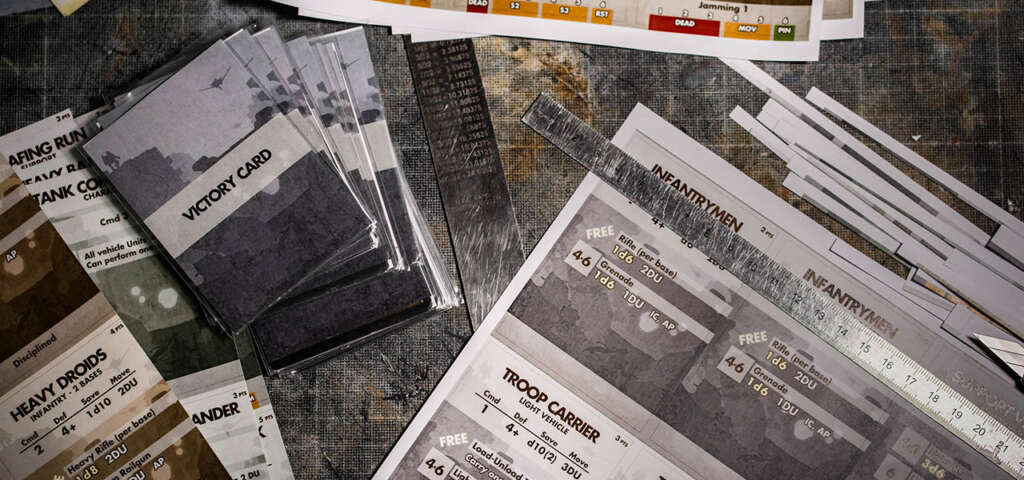
The Gaming Area
Starting with the obvious, you need a surface to play on. FSD plays on an unusually small area – one of the key aspects of the game and one of the selling points for many – and for a standard battle with 6-8mm miniatures you only need a 2′ x 3′ area, or 90 x 60 cm. If you’re just starting you can even play on a 2′ x 2′ area, or 60 x 60 cm.

Keep in mind that you’ll also need some area to roll your dice and to keep the cards that represent your forces, either next to the battleground or somewhere else..
DICE AND ACCESSORIES
The combat system in FSD requires players to use dice of various types. In order to play smoothly in a first game it is recommended a minimum of 6 d6, 3 d8, 3 d10 and 2 d12. This should work for most combat resolutions, but to make sure that you won’t need to remember some dice results it would be better for each player to have that many dice available.
For activations the game uses Activation Dice (ADs). Now, while these are simple d6s, it is important that each player has 12 ADs, possibly of a different colour from the d6s used for combat. During the heat of the battle it’s easy to mix them up, and lose track of your Activation Dice!
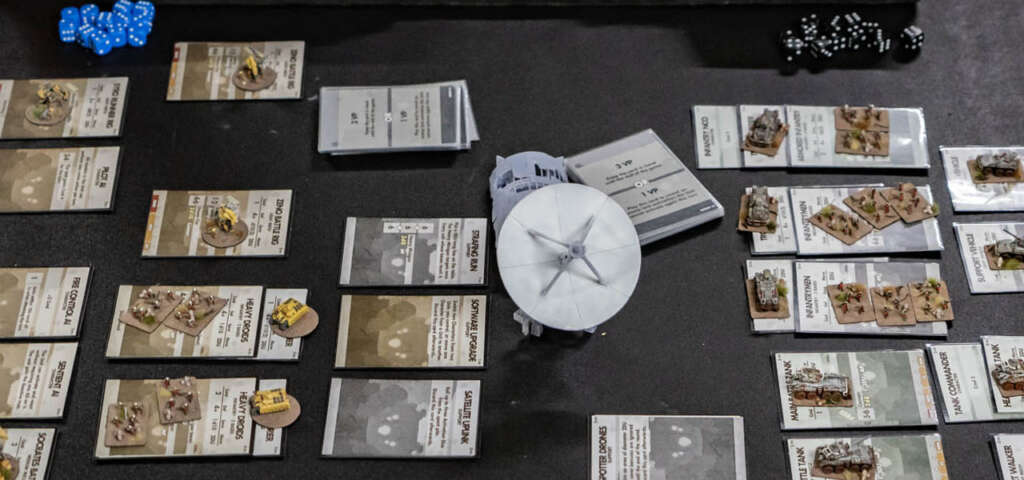
Players will also need some tokens. Any form of token would work (wooden cubes, candies, beans), since there are very few statuses that need to be tracked during the game:
- A token next to a Unit in play indicates that it is Pinned
- A token on the Damage Chart of a Unit marks the specific damage that Unit suffered
- A token on a card slot marks an action as Prepared
Lastly, since the game distances are measured in Distance Units (DU), it’s recommended to prepare a stick with 1DU spaced marks to act as a ruler. Alternatively, you can use a normal ruler and measure normally, considering that 1DU for a 6-8mm scaled game is generally 3 Inches, or 8 cm.
THE MODELS
Full Spectrum Dominance started out as a fully miniature-agnostic game. To this point we’re still encouraging people to use their own collections of small-scale models, but it’s more and more common to see players with our own range of miniatures. The gameplay does not depend on the actual shape or number of models on each base, so you can easily play with any model or even with cardboard tokens.
To prepare for a frist game you should consider building a 40 Points list. Any list would do to learn the ropes, but we’d recommend you include some Characters and Support cards in it to better grasp the sense of combined arms.
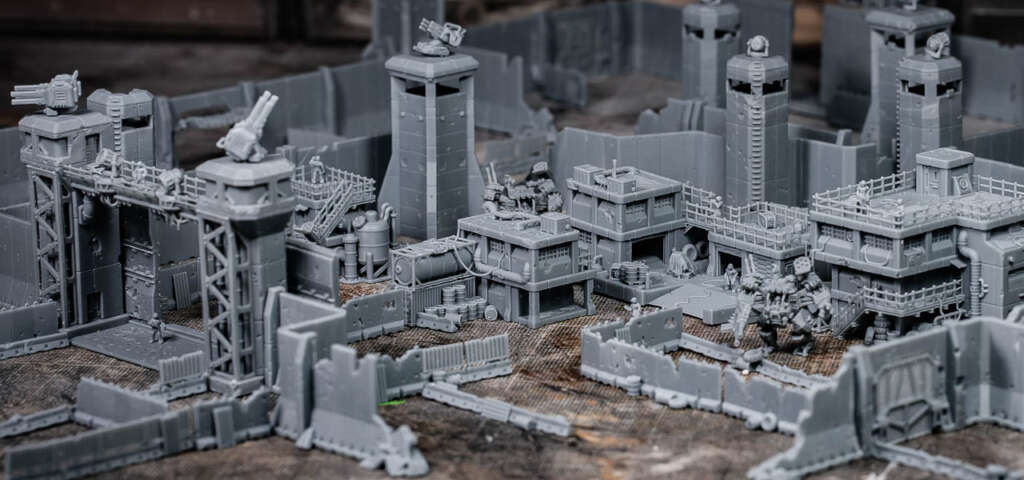
Players will also need some tokens. Any form of token would work (wooden cubes, candies, beans), since there are very few statuses that need to be tracked during the game:
- A token next to a Unit in play indicates that it is Pinned
- A token on the Damage Chart of a Unit marks the specific damage that Unit suffered
- A token on a card slot marks an action as Prepared
Lastly, since the game distances are measured in Distance Units (DU), it’s recommended to prepare a stick with 1DU spaced marks to act as a ruler. Alternatively, you can use a normal ruler and measure normally, considering that 1DU for a 6-8mm scaled game is generally 3 Inches, or 8 cm.
BLITZ LISTS
Below there are some recommended and balanced Blitz lists for the currently playable factions. The Blitz game format allows for a faster experience and requires less tracking (also removing the reinforcement mechanics that is present in normal 60 points missions).

